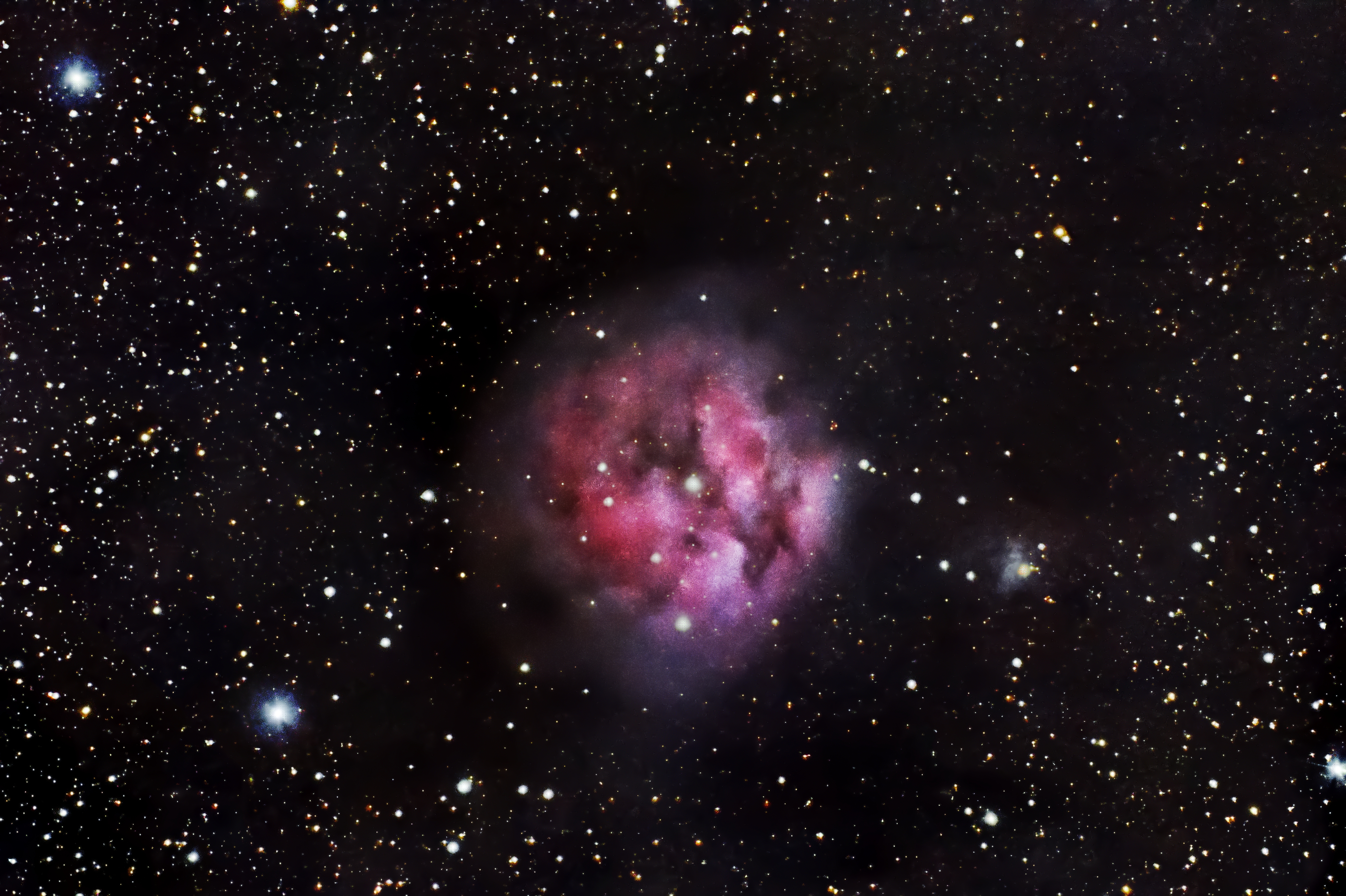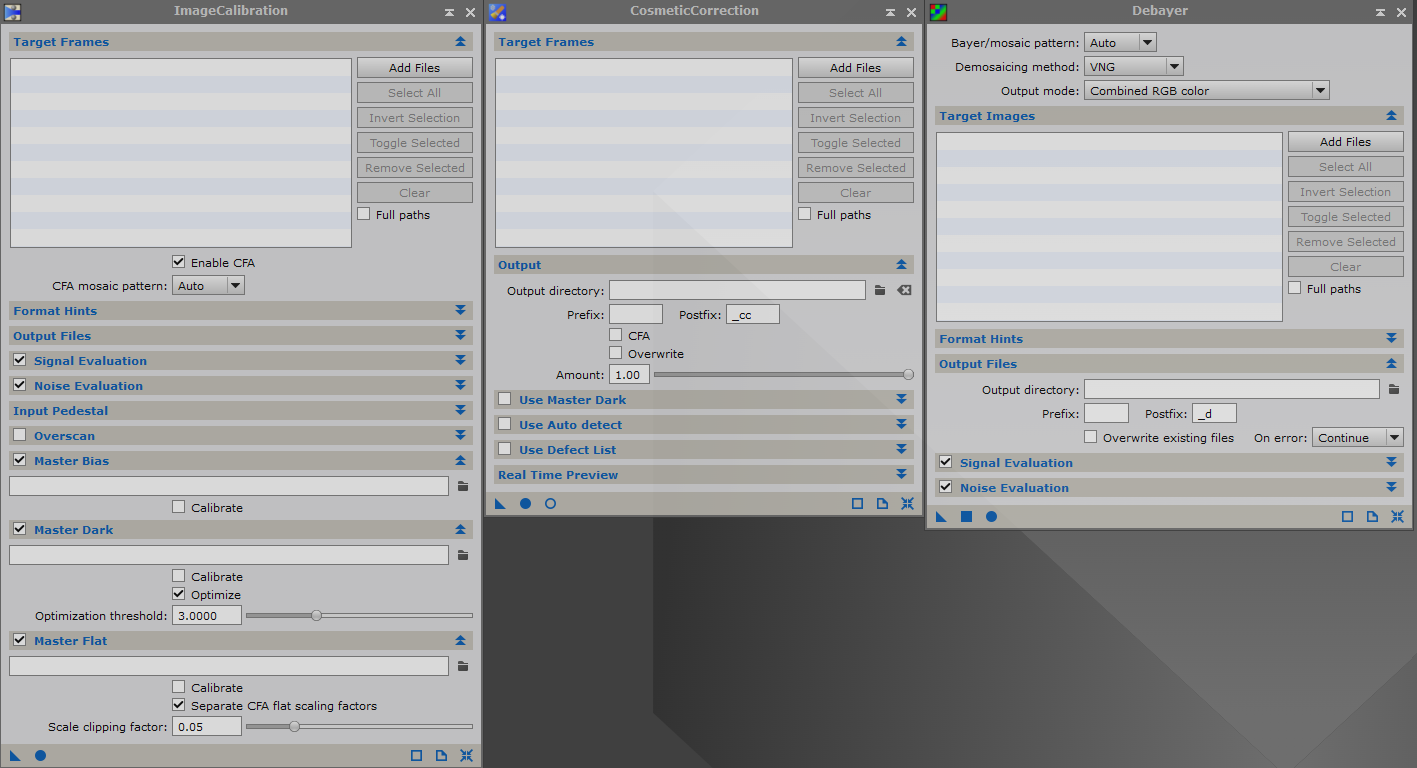Question for any long time Pixinsight users. I've been using the app for a few months now. I have not been doing my initial stacking in WBPP, I use Siril. One reason for this is I don't guide, I have an older LX200 mount that PHD2 just can't get to respond fast enough for guiding so I just adjust my exposures to give me reasonably round stars and recenter the object when it drifts a little. The stars not perfect ones and WBPP really does want those good PSF values and has in the past rejected way too many of my lights, sometimes even totally failing. On the other hand I have a command I can input into Siril and get it to stack 90-100per cent of my frames, see my latest image the cocoon, Siril used 100per cent of all the lights, but in watching a new video from Pixinsight I decided to give WBPP another go round. I have stacked the last data set I acquired with The Cocoon nebula in WBPP. Anyway, my question is this. In using WBPP I processed my OSC data by splitting the RGB channels, drizzling, and then recombining the RGB channels. Hope you follow, this is on the post calibration screen of WBPP I believe. Long time users will hopefully know what I'm talking about. Watching the processing pipeline as it was doing its thing I noticed that it was splitting my channels and doing them separately, one other thing I noticed is in splitting the channels to process them it was rejecting frames in each individual channel, but the rejection was different, 45 for one channel and 56 or so for another. Of course I don't do narrow band and this is the first time I did WBPP this way. I was watching a youtube vid from Pixinsight itself on WBPP, I think it was posted just a few days ago. He made a point of saying that you should process OSC from a DSLR by selecting the split channel selection and then checking the recombined RGB tick box. Also using drizzle. When I look in the FITS header for the finished files which I have a bunch, I can't seem to find out how many of my light frames it used and the total integration time of my integrated photo. I have no idea how many total frames were used and my total time of integration. Siril always lists that info in the finished fits file it gives you after all is said and done. I don't have a problem with the way WBPP did everything, just how can I find out how many of my subs were integrated into the final image and what my combined time is. Like I said during processing each individual channel had a different number of frames rejected. So I can't just look at the processing log to see how many were finally integrated. That saying a lot just to ask how I might be able to find out how many of my subs were used and the total time of the integrated photo, also a nice thing to know is how many frames did WBPP throw out total not in each channel, these weren't individual frames like you'd get from a mono camera, maybe I'm looking at it wrong, maybe because its splitting them I should look at them that way, but the time would be 40 secs for each frame for each filter not 40secs divided by 3. The photo below was stacked in Siril and used all my light frames, are the stars perfect, no, but then neither is my setup, and I'm not selling anything just enjoying, but its no fun seeing and hour or more of your trouble get tossed in the bin or a total failure because your stars might be little elongated, which nowadays is fixable in post. Maybe there's a way to get WBPP to not be so picky, I haven't found it yet, but then I said I am new to it, but knowing the total integration time is more important right now. Thanks anyone who knows this info.


